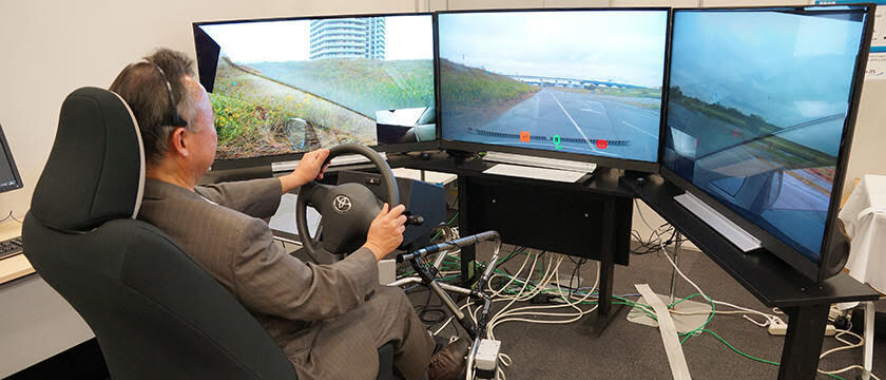 Soliton puts its money where its mouth is. As a company who supplies OEM video streaming solutions for the teledriving industry, Soliton actually went ahead and built its own complete teledriving platform, just to demonstrate the complexities behind the technology and proving that the whole concept is possible and safe.
Soliton puts its money where its mouth is. As a company who supplies OEM video streaming solutions for the teledriving industry, Soliton actually went ahead and built its own complete teledriving platform, just to demonstrate the complexities behind the technology and proving that the whole concept is possible and safe.
Click here to see a video of a remote driving bus designed and implemented by Soliton.
What is the definition of Teledriving?
Teledriving is remote driving. Not to be confused with autonomous driving, it allows a person in another location to drive and operate the car. It has many uses for operating any type of vehicle where there is a danger to human life such as a war zone, pandemic, or natural disaster. Any situation where there could be a risk to life allows the human driver to stay out of harms way.
However two more recent case studies have evolved that will ultimately rely on teledriving.
- The first is enabling the demands of full autonomous driving. In the event a self-driving car becomes confused, such as with a strange road-work layout, then the car can “call-home”. A remote operator will then take manual control and remotely drive it around the obstacle before returning the vehicle to its autonomous “self-driving ”mode.
- The second is micromobility. What is micromobility you may ask? Micromobility is a term given to a new class of lightweight electric vehicle, or transportation device such as a scooter or small electric car, that can be hired or utilized as a self-driving taxi. Many companies are developing solutions where a small vehicle can be remotely driven to a customer where they can drive themselves, but then the customer can drop off the vehicle anywhere, even on a busy main road, where a remote teleoperator can immediately take over operation and drive the vehicle to its next customer or to a safe parking space, giving the customer a hassle-free car rental.
The Challenges of Remote Driving
The biggest and most obvious challenge is safety. Not only for the passengers but for other road users and pedestrians. Any technology failure can have serious consequences. Resilience and reliability are necessary design factors, but actually the most complex challenge is one of video latency and having the remote driver view his surroundings in almost real-time.
What is the definition of Ultra Low Latency Video Streaming
There is no defined definition of ultra low latency, but actually for a remote driver to view in real-time, they require an end-to-end latency of less than 100ms for safety – any driver needs to see the world in almost real-time. But its more than just the video, the remote control operation, that is the control of the car, needs to occur within that timescale too. All elements in the live stream can add latency – the camera, the encoding, the cellular network, the decoding, the display and the return network for the remote control driving signals.
To put this into prospective, live streaming for teledriving needs to occur over the mobile phone network which could be a mixture of 4G and 5G – you cannot rely on 5G alone. Most video encoders that operate over cellular have delays between 1 to 2 seconds which is too high for teledriving. An additional complication is that cellular phone lines are inherently unstable and bandwidth is unpredictable especially as you move around. Any technology of live streaming for teleoperations not only requires ultra low latency, but needs to be able to cope effectively with unstable cellular networks.
What is the live streaming solution for Tele-driving?
Soliton has built its video encoders for live streaming so they meet the needs for teledriving. That is with high reliability and ultra low latency. Their encoders with their specialized RASCOW2 protocol, can live stream over 4G in less than 65ms, and even less over 5G. For resilience it can use multiple SIM’s simultaneously from multiple operators, and additionally uses something called “adaptive encoding” which means it optimizes the live stream based on the available bandwidth at any given time on any network. If the bandwidth drops to even a few hundred kb/second, it does not just stop the encoding, it delivers even when there is a low level of bandwidth availability. It is designed for high reliability even in the most challenging of situations.
No other video encoder is available that can offer 65ms glass-to-glass latency over 4G. The RACSOW2 protocol is available as a hardware solution with the Zao-X product, and it is also now available as a software version Zao-SDK that can be installed on a customers own hardware.
Soliton continues to build prototypes for teledriving as well as working with partners to develop a complete solution. But we always seek new partners – from telco to automotive, from micromobility to military, if you are interested in working with Soliton then please do not hesitate to contact us.



